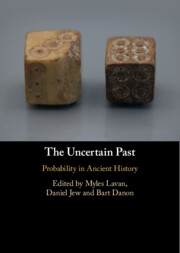Book contents
- The Uncertain Past
- The Uncertain Past
- Copyright page
- Contents
- Figures
- Tables
- Contributors
- Acknowledgements
- 1 Probabilistic Modelling in Ancient History
- Part I Uncertainty
- Part II Variability and Missing Data
- 5 Children and Their Impact on Family Finances in Roman Egypt
- 6 The Financial Sustainability of Grain Funds
- 7 New Approaches to the Urban Population and Urbanization Rate of the Roman Empire, AD 1 to 200
- 8 Afterword
- Index
- References
5 - Children and Their Impact on Family Finances in Roman Egypt
from Part II - Variability and Missing Data
Published online by Cambridge University Press: 18 November 2022
- The Uncertain Past
- The Uncertain Past
- Copyright page
- Contents
- Figures
- Tables
- Contributors
- Acknowledgements
- 1 Probabilistic Modelling in Ancient History
- Part I Uncertainty
- Part II Variability and Missing Data
- 5 Children and Their Impact on Family Finances in Roman Egypt
- 6 The Financial Sustainability of Grain Funds
- 7 New Approaches to the Urban Population and Urbanization Rate of the Roman Empire, AD 1 to 200
- 8 Afterword
- Index
- References
Summary
This chapter uses an econometric, stochastic, model to answer questions on Roman Egypt. The questions posed are, how did the number of children impact on the financial position of ordinary families, and is it likely that parents were driven by debt to limit their family size by abandoning new-borns? The model examines the financial stresses and strains faced by typical families in rural Roman Egypt by tracking their net income, savings and debts over a generation to see how many families thrived or fell into financial difficulty. The plausibility of the model and its sensitivity to the key assumptions is assessed. It is concluded that whilst having children could certainly assist a family’s financial well-being over the long term, a large number of small children could act as driver to indebtedness, though the primary driver would still be the quality and variability of the harvest. Turning to the second question of family limitation, the model predicts that, as a minimum, there was a significant and socially visible chance that private and state tenants would have had to abandon a new-born from financial necessity. Some families would have had to resort to it on a number of occasions.
Keywords
- Type
- Chapter
- Information
- The Uncertain PastProbability in Ancient History, pp. 197 - 230Publisher: Cambridge University PressPrint publication year: 2022



